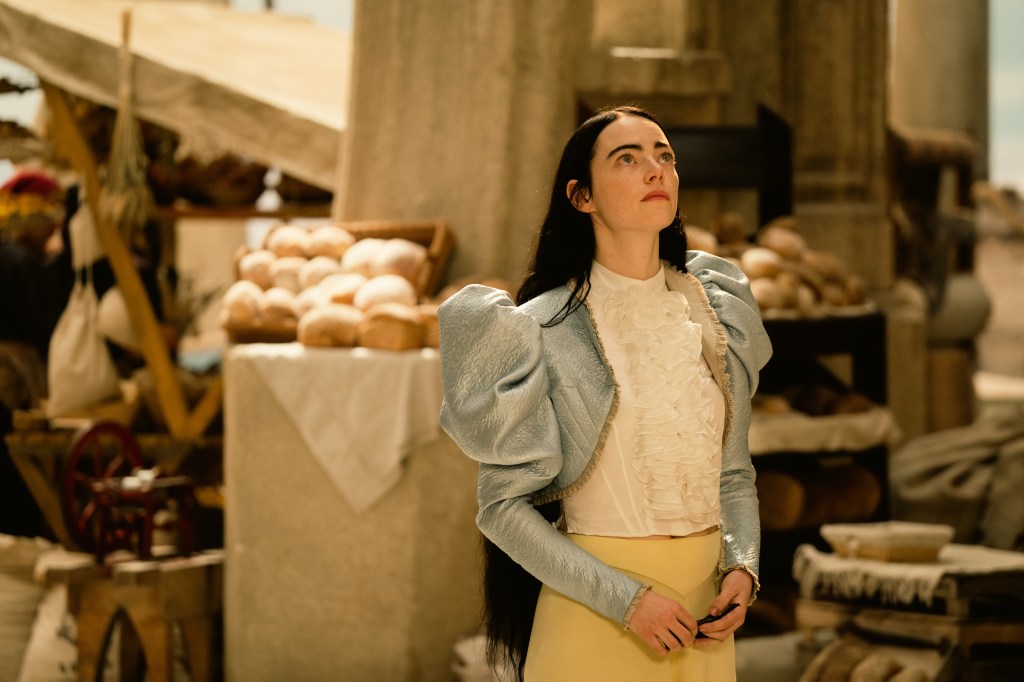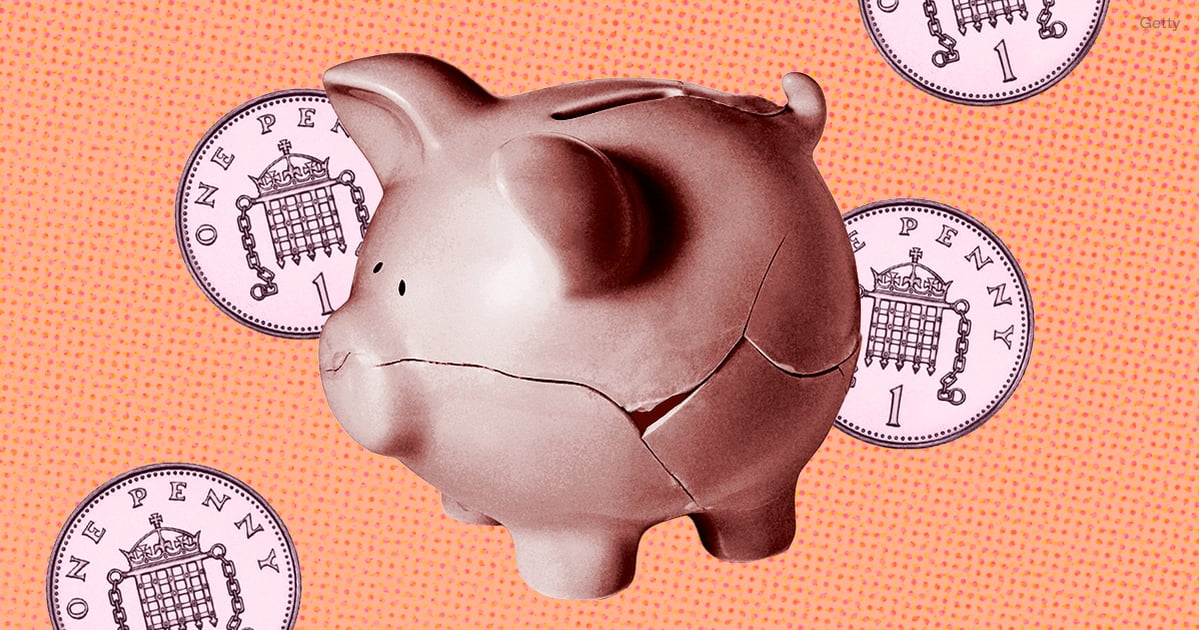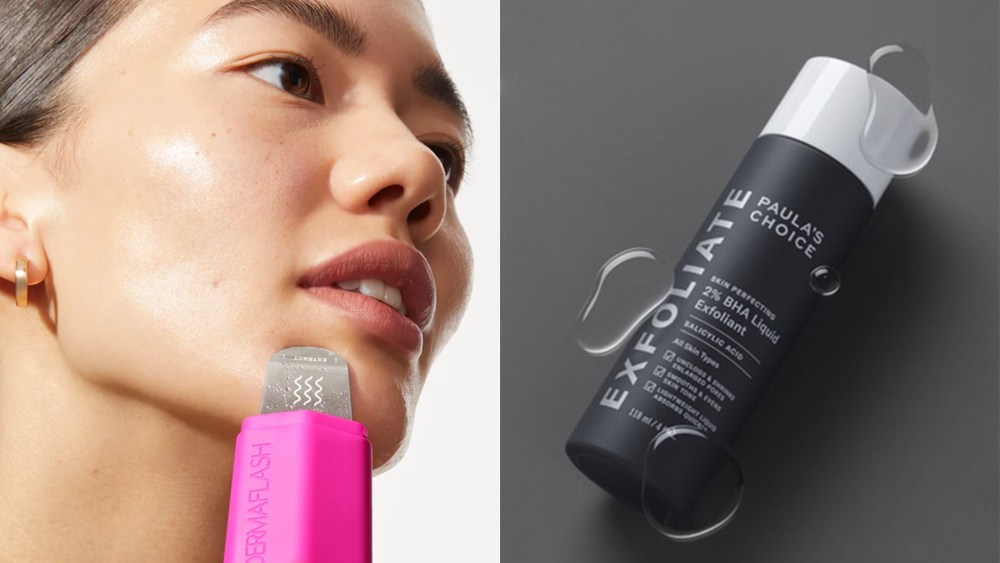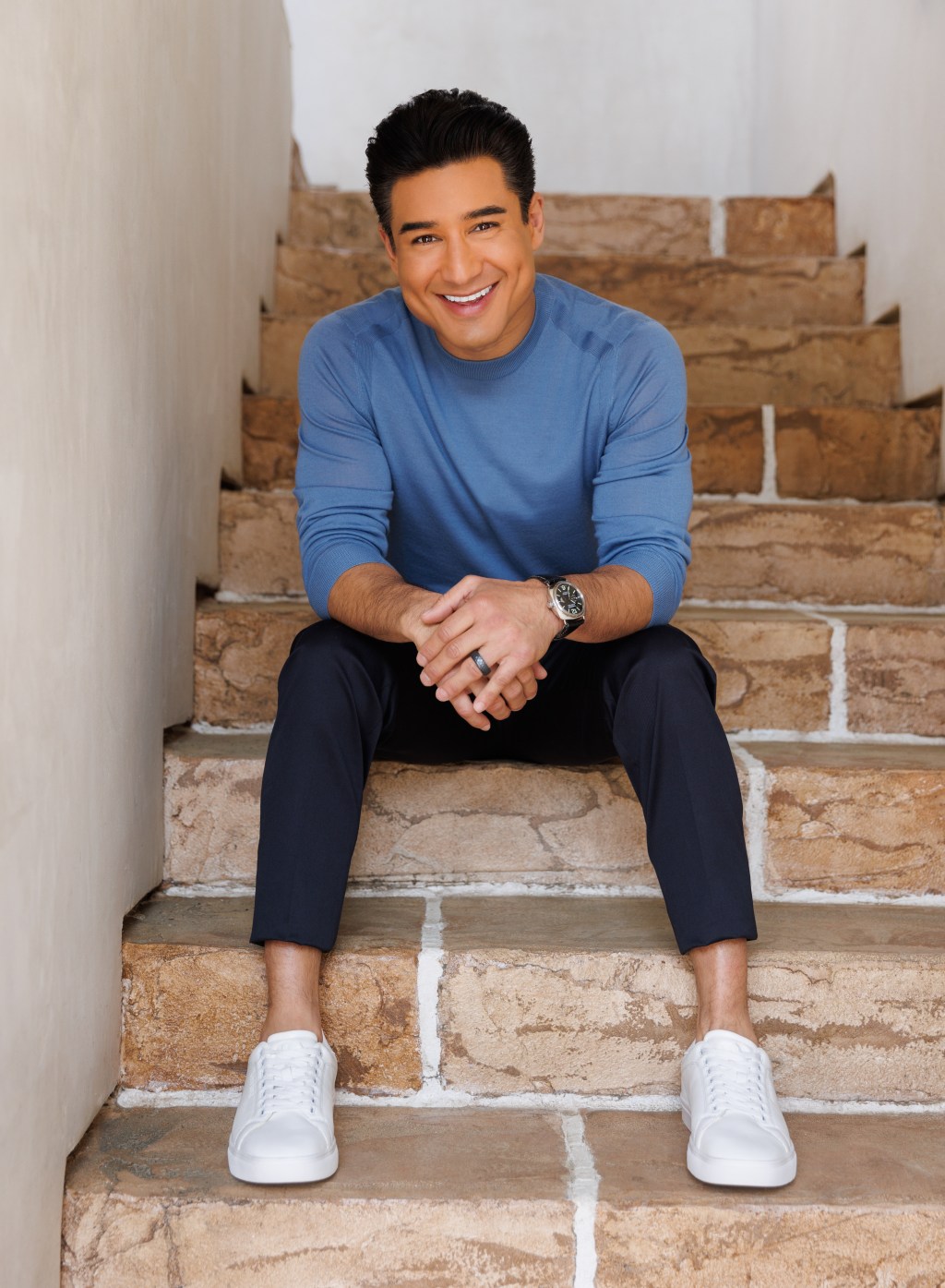“Poor Things,” the latest dark comedy from Greek director Yorgos Lanthimos, emerged from the Venice International Film Festival earlier this fall with the festival’s top award — and as an early awards season front-runner. Included in the buzz is the film’s costume designer Holly Waddington, who was tasked with outfitting the gorgeously wacky onscreen world.
The sexual coming-of-age film stars Emma Stone as Bella Baxter, the peculiar daughter of an experimental scientist with a special interest in creating chimeras. Bella, who has the brain of a child but the body of a young woman, is soon whisked away on a freewheeling adventure by one of her many romantic suitors. Set in a Victorian-esque steampunk world, “Poor Things” costars Willem Dafoe, Mark Ruffalo and Ramy Youssef. The film was released theatrically on Friday and Waddington’s artful costumes from the film are currently being exhibited at FIDM in Los Angeles.
Waddington notes that while the production designers had already sketched out a look for the film when she came onboard, Lanthimos wanted her to first develop her own visual response to the script.
“One of the great things about working with Yorgos is that he isn’t somebody who comes to you with a finished sense of what things should be. He very much encourages a rich, creative process for each of his collaborators,” says Waddington, who had previously worked with “Poor Things” screenwriter Tony McNamara on “The Great.” “It’s quite rare to be able to do that.”
Describing “Poor Things” as a “dream project,” Waddington relished the opportunity to create a sartorial world that wasn’t firmly rooted in any one time period. “I had this sense that it shouldn’t be obviously sci-fi, and it shouldn’t be obviously period drama,” says Waddington, noting that she ended up grounding the sartorial story in Victorian-era silhouettes, without being confined to that fashion era.
“I could put a pair of knickers in Bella’s wardrobe that looked like something from the 1930s without it mattering too much, because it wasn’t a film that needed to tell a story of a particular period in time,” she says. “We took away the corset, and I played with really contemporary, highly textured materials. I didn’t work with any trimmings that were classically Victorian — we made our own trimmings.”
“Poor Things” shot in Budapest during the pandemic and Waddington worked closely with a buyer in London to source a body of fabrics to fit the wide range of costumes and character personalities.
“I think the hardest part was working out Bella’s wardrobe, because that needed to tell quite a big story, and needed to describe all of these different chapters of her life and of her evolution,” says Waddington, who crafted distinct sartorial identities for each stage of the film. In the beginning of the film, Bella has the mental capacity of a child and is dressed by a housemaid.
“Very quickly into the day the clothes would have disassembled and come apart. So she isn’t ever properly dressed,” says Waddington. For the second chapter of the film, Bella leaves home with one of her suitors and is on her own — and dressing herself — for the first time.

“Though her body is a fully formed woman’s body, she’s a young child, so she doesn’t really have the knowledge of how to apply a skirt to the jacket to make it match,” says Waddington, detailing a few of her unusual outfit combinations: yellow knickers with a voluminous top, a petticoat worn on its own with a frilly top.
“We were playing with how she would style herself in the way that maybe a five-year-old dresses up in their mother’s wardrobe,” she adds. “So the looks are all over the place.” As Bella matures, her outfits begin to better match the conventions of her surroundings.
The men in the film also get distinct fashion moments. Bella’s mad-scientist father Dr. Godwin Baxter, played by Dafoe, was described in the text as a “man ahead of his time.”
“So I wanted that to come through a little bit in the way that he dressed,” says Waddington, noting that his look was partially inspired by the siren suits worn by Winston Churchill during World War II. “I wanted [Baxter] to have a utilitarian quality to his clothes. So he has these boiler suits with places for his tools and his pens, and he has one that’s a bit like a smoking jacket. And I wanted him to be very inconspicuous when he’s out of the home, because of his disfigurement,” she adds; the character is marked by severe facial scars.
Bella’s primary love interest in the film, played by Mark Ruffalo, was outfitted to reflect the classic style of an upper class man in the late 19th century. “He has this city lawyer look that he wears at the beginning of the film, and then you see him in this very jolly holiday look in Lisbon — which was my favorite look of his,” says Waddington, noting that as the character breaks down, so do his outfits.
“He ends up in this slightly sad gray striped suit that then just kind of disintegrates,” she says. By the end of the film, “I needed him to feel like he just lost the plot completely,” she adds.




